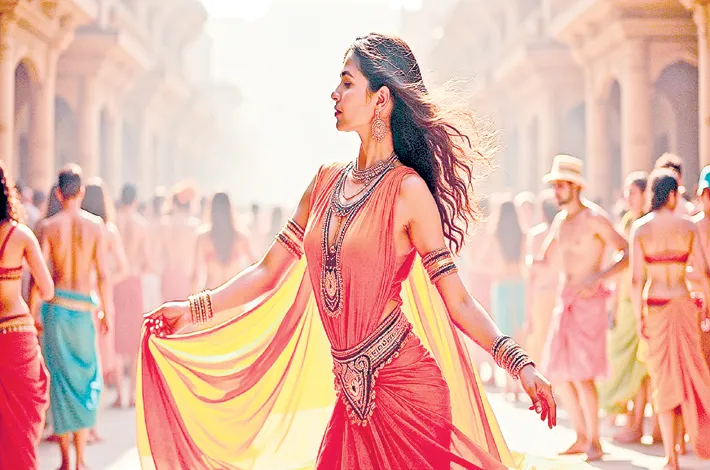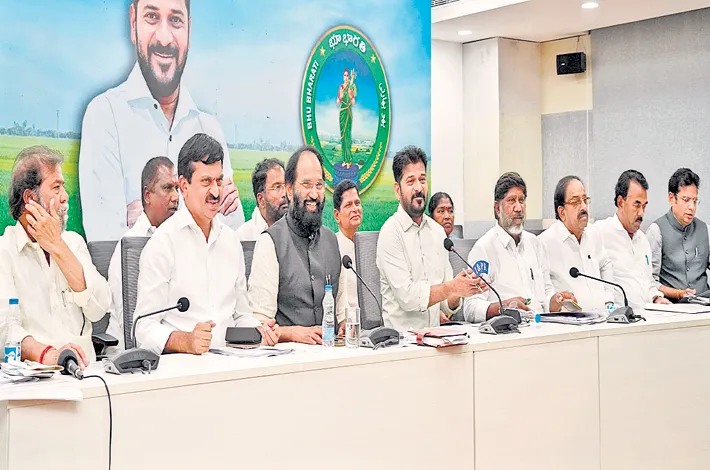The Dance of Desire
03-08-2025 12:00:00 AM

In the ancient city of Ujjain, where the air was thick with the scent of jasmine and the melodies of sitars wove through bustling markets, lived Amara, a dancer renowned for her grace. Her performances were not mere displays of skill but a living tapestry of emotion, each movement a verse from the ancient Kamasutra—the sacred text of love, desire, and connection, penned by the sage Vatsyayana. Amara had studied its teachings not just as a guide to physical intimacy but as a philosophy of the heart, a way to weave souls together through trust and vulnerability.
Across the city, in a modest workshop, worked Kavi, a sculptor whose hands shaped stone into gods and goddesses. His creations adorned temples, but his heart yearned for something more—a connection that transcended the cold marble he carved. Kavi had heard of Amara’s performances, her ability to make audiences feel the pulse of desire itself. Intrigued, he saved his earnings to attend her next show at the Moonlit Pavilion, a venue famed for its intimacy under the stars.
The night was warm, the sky a velvet canvas studded with diamonds. Amara took the stage, her silk sari shimmering like liquid moonlight. Her dance began slowly, embodying the Kamasutra’s first principle: the art of attraction. Her eyes, lined with kohl, scanned the crowd, locking briefly with Kavi’s. In that fleeting moment, Vatsyayana’s words came alive: “The gaze is the spark that ignites the heart.” Kavi felt his breath catch, as if she had seen not just his face but his soul.
Her movements grew bolder, illustrating the text’s teachings on touch and rhythm. Each step, each sway of her hips, was an invitation—not to the physical alone but to a deeper understanding. The Kamasutra taught that love was a dance of equals, where both partners offered and received in harmony. Amara’s performance was a dialogue without words, and Kavi, though a stranger, felt as if she danced for him alone.
After the performance, Kavi lingered, his heart pounding with a courage he hadn’t known he possessed. Amara, still radiant from her exertion, noticed him near the pavilion’s edge. His eyes, warm and earnest, reminded her of Vatsyayana’s description of a lover: one who sees beauty in the ordinary. She approached, her anklets chiming softly.
“You watched as if you understood,” she said, her voice a melody.
“I saw more than a dance,” Kavi replied. “I saw a story of longing.”
They spoke until the stars began to fade, discovering a shared reverence for the Kamasutra’s wisdom—not just its sensual teachings but its emphasis on trust, communication, and mutual respect. Amara confessed she danced to feel free, to express what words could not. Kavi shared how he sculpted to capture fleeting moments of eternity. Their conversation flowed like a river, each word a step closer to the intimacy Vatsyayana championed.
Over weeks, their bond deepened. They met in secret gardens, where Amara taught Kavi the subtle art of touch, as described in the Kamasutra—not merely physical but emotional, a brush of fingers that spoke of care. Kavi, in turn, showed her how he carved stone, guiding her hands to feel the pulse of the rock, a metaphor for patience and persistence in love. Their connection was a living embodiment of Vatsyayana’s principles: love as an art form, requiring skill, intention, and vulnerability.
One evening, under a banyan tree, Amara shared a passage from the Kamasutra she cherished: “Love is not conquest but surrender, a mutual giving that elevates both.” Kavi, moved, took her hand and confessed his fear—that his humble life could not match her brilliance. Amara smiled, quoting Vatsyayana: “The heart seeks not wealth but truth.” She kissed him then, a kiss that was both tender and fierce, embodying the text’s balance of passion and restraint.
Their love faced trials. The city whispered of their unlikely pairing—a dancer and a sculptor, one celebrated, the other obscure. Amara’s patrons disapproved, fearing her art would suffer. Kavi’s family urged him to marry within his caste. Yet, the Kamasutra guided them. It taught that love thrives on trust and defiance of meaningless convention. They chose each other, not with reckless abandon but with the deliberate courage Vatsyayana extolled.
One night, Amara invited Kavi to her home, a space adorned with murals of lovers in eternal embrace. There, they explored the Kamasutra’s deeper teachings—not just the physical union but the emotional and spiritual. They moved together, not as performers or artists, but as two souls seeking unity. Each touch, each whispered word, was a vow, echoing Vatsyayana’s belief that true intimacy is a sacred act, a dance of hearts as much as bodies.
Their love became a legend in Ujjain. Amara’s dances grew more profound, infused with the joy of their bond. Kavi’s sculptures took on new life, each curve reflecting the warmth he found in her. Together, they proved the Kamasutra’s timeless truth: love is not a fleeting moment but a lifelong art, crafted with care, respect, and the courage to bare one’s soul.
Years later, under the same banyan tree, an old Kavi and Amara sat, their hands still entwined. The city had changed, but their love remained a testament to Vatsyayana’s wisdom—a reminder that desire, when rooted in mutual reverence, becomes eternal. As the sun set, Amara leaned against Kavi, and they watched the stars emerge, their hearts still dancing to the rhythm of love’s ancient song.








